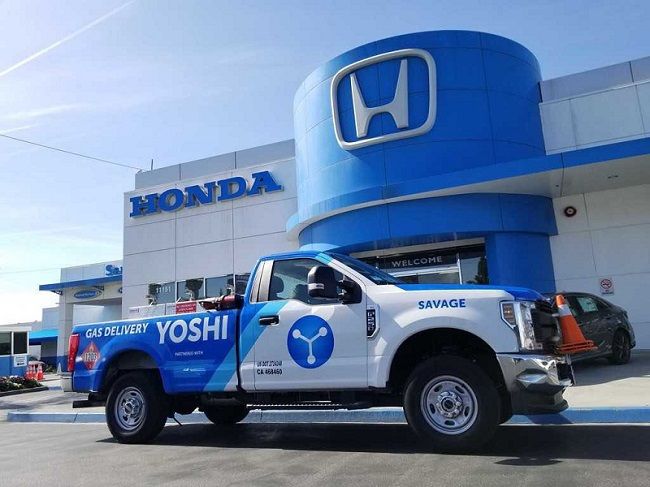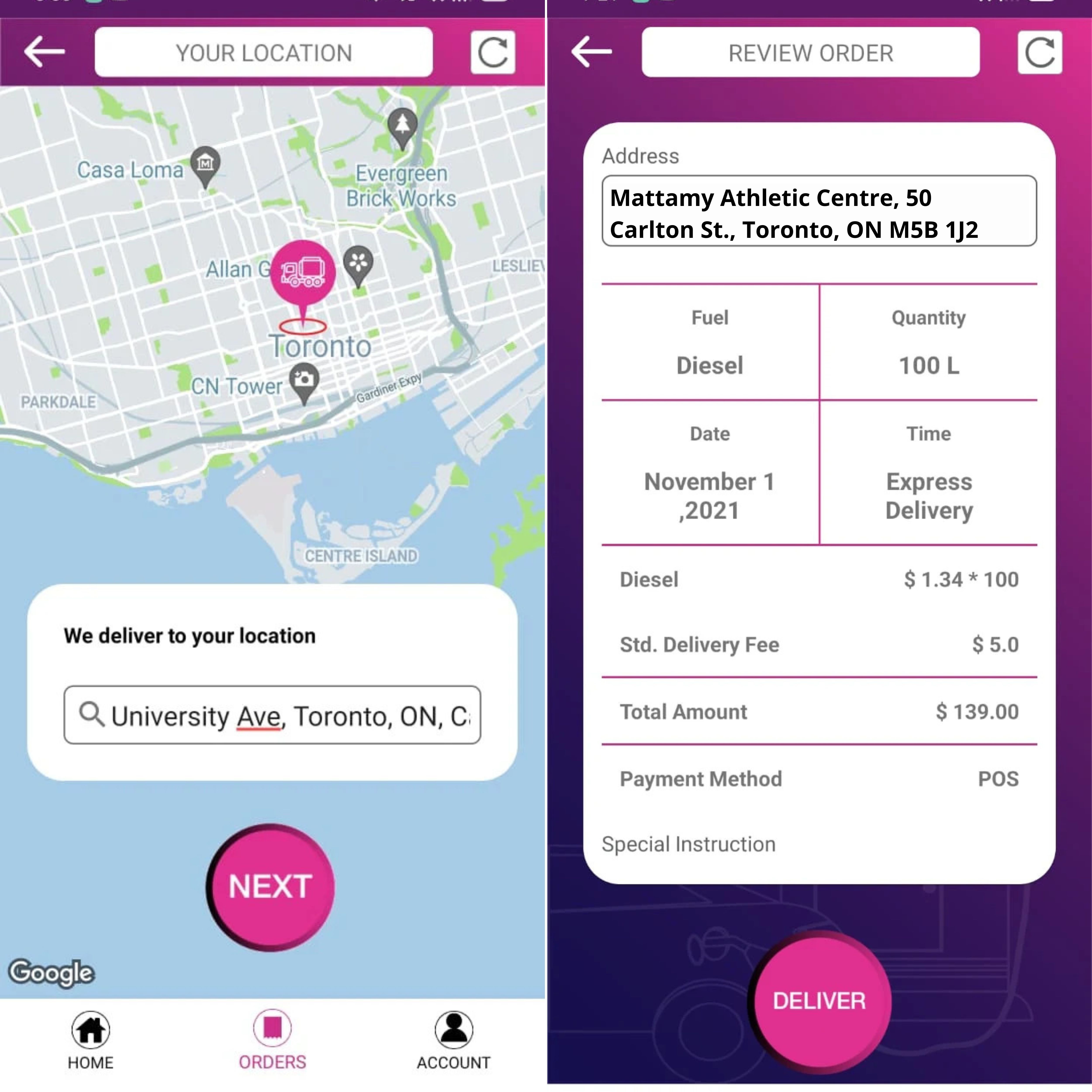A full tank every time you sit in the driver’s seat is such a blessing.
Only if you can also get an auto-refilled tank, that would be a dream come true.
Let us tell you, it’s no more a dream. Fuel delivery services are now making it possible.
Imagine yourself getting ready to leave for the airport but there’s no fuel in the car tank. Now imagine a fuel delivery van pulls up next to your vehicle and refills your tank for you. Such a relief!
All you have to do - open the app, make a request, pin location, pay up and chill.
When you were stranded that time on a one-off roadside with an empty tank, getting the gas station to come to you would have been perfect.
Now you can!
Get Fuel Delivered anywhere you want, Almost anywhere!
In 2022, the fuel delivery market is mapped for $4.8 billion.
You can get fuel delivered anywhere these days. Well, ALMOST anywhere!
It is hard to believe but there are only a few fuel delivery companies, restricted to some areas in this billion dollar market.
Well known car service platform, Yoshi does deliver fuel but it is only prominent in some big cities like Houston, Boston, and LA.
EZFill is expanding out of Miami, still limited to the East Coast.
While Zebra Fuel and CAFU are London and UAE-centric only.
Needless to say, the market is comparatively empty. If you are looking to start a fuel delivery service, NOW is the right time.
But where is the demand and where are the funding options?
Market demand
The number of gas stations in the United States cut down from 200,000 to less than 170,00 left and the registered number of cars in 2021 is recorded at 289.5 million. The stations are reduced, but the number of vehicles keeps increasing.
I mean, how many of you went out for gas during the pandemic? I know I didn’t.
There is an evident gap. The fuel has to reach you somehow.
Many fuel stations took a significant hit. Giants like Shell and Exxon had to shut down many of their operations to survive the financial crisis. It was so bad that the oil and gas industry became an example to others of ‘what not to do.’
Funding Opportunities
Even if they took a hit, they also took a hint.
By the end of the pandemic, everyone was working double time.
Exxon bought stakes in fuel delivery startup Yoshi and Shell acquired InstaFuel.
So, a gap in the market, check;
high demand, check;
funding opportunities, check.
Do you see why it is a good time to be a fuel delivery startup?
Now that we have established that you need to start your own fuel delivery service, where do you find all the aid to get started?
Right here!
We are the aid. We have everything to give you a running start:

Fuel Delivery Business Models
Where does the fuel come from? Where does it go?
It comes from oil and gas companies and goes to vehicle owners.
If you think it is as simple as B2C, it is not. Fuel delivery can also be B2B or subscription-based. It is a three-sided model in any case: there is a customer, delivery personnel, and an admin.
It is more or less like a food delivery app with the restaurant coming to you on wheels.
- You open the app,
- Order food/fuel,
- Pick an amount,
- Select your location or parking lot,
- Get delivery fee charged,
- Pay up, and
- The fuel/food gets delivered to you.
- Login and Profile: You need a login page that takes you to your profile.
- Register vehicle: Next, you need to register your vehicle. One person might need to register multiple vehicles. We help facilitate this into your app.
- Ordering: The customer side will have many options like fuel type, quantity, order now vs. schedule delivery, payout, email receipts, and finally, live tracking when the fuel is in transit.
- Accepting request: Driver gets real-time requests on orders. Location and vehicle info should always be included.
- Area restrictions: The order and requests can only be sent out under a specific mile range. This will make it easy for both sides.
- Gas Price: The prices are always going up and down. We could do dynamic change or manual change. We could also do both.
- Geo Tracking: An accurate map between the driver’s location and the vehicle parked is the top priority.
- Dashboard data: Everything between the customer and fuel delivery driver turns into data for the admin.
- Order history: You need an order history, so does the customer and the driver. Everyone should be able to pull up their end.
- Customer support: Give the customer and the delivery person the support they need!
- By making the app easy to use,
- With so many payment options that they never have to sort their cards,
- Calming their anxious minds through live tracking, and
- Allowing them to express their relief or dissatisfaction through a rating and review system.
B2B Model
Booster fuel aggregators have tie-ups. There are companies with private parking lots like eBay and Pepsi. If their mass vehicles need a fuel filling, they too can use a fuel delivery service.
Instead of running everything through one interface, you can separate it into categories
The Philippines-based Gasmee did it. In fact, when you look up B2B fuel delivery, their page pops up on the search engine’s 1st set of listings.
If you ask us? That’s a smart business move!
B2C Model
This is pretty straightforward.
Your vehicle could be parked anywhere; you just have to pin your location and follow the steps above.

You could be anywhere, it could be an emergency, duel deliverers will get to you no matter what, but they prefer parking lots. Lots are easy to map, track and access when the on-wheel oil delivery pulls up near you.
Subscription Model
Subscription models are mostly benefit based.
You subscribe to a monthly or yearly fuel delivery service. You get them to your vehicle on a fixed date every month.
Another way to do this, subscribe to the delivery services and get notifications to fuel up before price hike or get special discounts and no delivery charges.
Better way is to do both.
All you need in a Fuel Delivery App
Once you have fixed your primary business model, it’s time to give us the ropes.
We help you stand out from the crowd in terms of UX design. Of course, being in the business for 13 years helps, but that’s not all.
We know which features are an absolute necessity for your business, and which ones change based on the fuel delivery service model.
We also know just where to begin -
The admin panel, the driver panel, and the customer panel.

A happy customer equals a successful on-demand delivery.
We make the customer happy!
How?
You are halfway down the success road and we have taken a significant load off of your shoulders,
Now you can focus on the business aspects!
We do App, You do Acquisitions
The non-app development side of the business is in your capable hands.
Step 1
Each country has specific oil and gas industry rules.
Look into the regulation of your country, your area and for specific licenses.
Involve a lawyer, apply for licenses, for regional vehicle registry, business registration, and more.
The more familiar you are with the industry laws, the smoother the journey.
Step 2
Time for big decisions - where does the fuel come from? Where does the money come from?
Begin by looking at some key players- Metso, Honeywell, JANSEN and Emerson
If you aim at one company, it can create some funding opportunities but it will also limit your partnerships. Partnering with fuel stations will expand your reach into hyper-local areas.
In any case, people want choices and you have to give it to them.
Whether these choices come from the oil factories or gas delivery stations near you is a business decision.
Step 3
You have fuel, financial aid and permission to transport. Bring in your fleet!
The fuel carriers are custom vehicles.
Either you buy a suitable transport and customize it, OR
You place a custom order with heavy vehicle companies.
These fuel carriers need to be fitted with a GPS.
The fuel tankers must have the capacity to last them a minimum 24 hour.
You also need drivers and refill centers.
Step 4
You have the method, you have the means, now market your fuel delivery service.
Conclusion:
The fuel delivery market is set to reach $9.3 billion by 2032.
The market shows an evident gap in apps available for delivery like Yoshi, Booster, EZFill and Zebra Fuel and CAFU are limited to specific areas.
The startups are not expanding fast enough. You be the first!
With thorough market research and planning, the market is there to be captured.
With our technical expertise in successfully delivering on-demand apps, we can be your partner to sail through the process.

